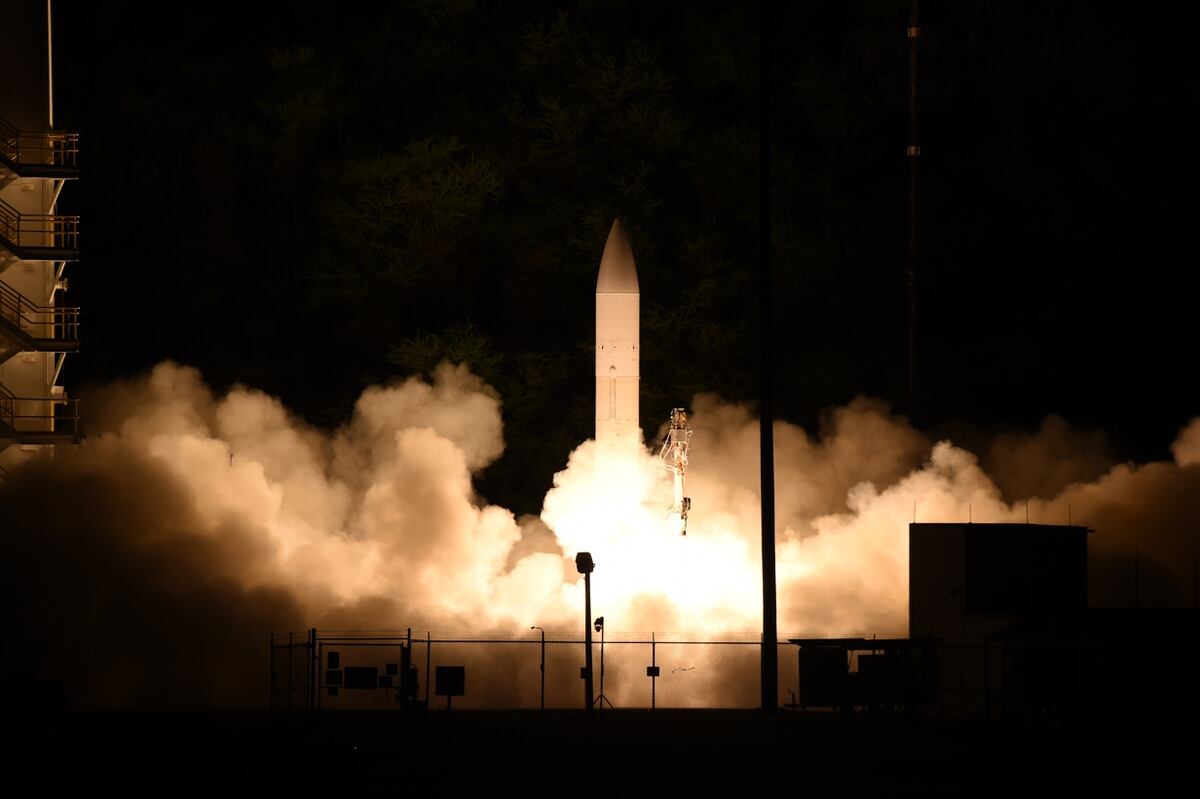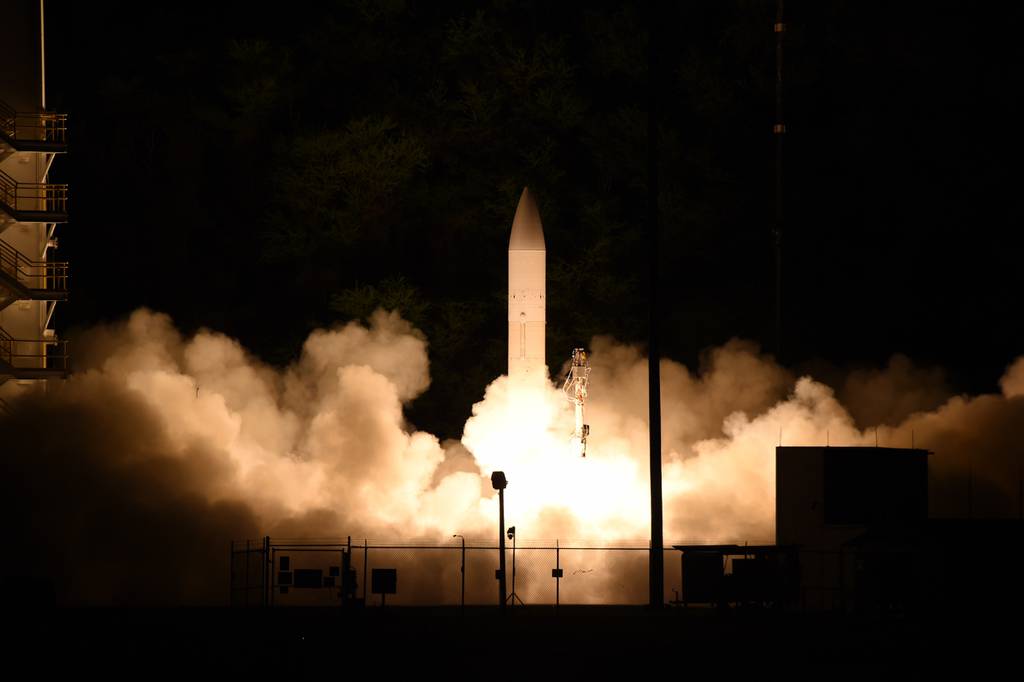
The U.S. tested a hypersonic glide body March 19, 2020, from the Pacific Missile Range Facility in Kauai, Hawaii. (U.S. Navy)
WASHINGTON — U.S. Army Secretary Ryan McCarthy reported in his speech at the Association of the U.S. Army conference that the Pentagon’s hypersonic missile hit within 6 inches of its target.
“Hypersonic missiles are hitting their targets with a variance of only a mere 6 inches,” he said during his speech at the virtual opening ceremony Oct. 13.
McCarthy was referring to the Army and Navy’s successful hypersonic glide body flight test this year, which launched from the Pacific Missile Range Facility in Kauai, Hawaii, on March 19, an Army spokesperson confirmed.
The Common-Hypersonic Glide Body, or C-HGB, launched and flew at hypersonic speed to “a designated impact point,” according to a statement issued the day of the test.
Hypersonic weapons are capable of flying faster than Mach 5 — much faster than the speed of sound — and can maneuver between varying altitudes and azimuths, making it harder to detect.
The C-HGB — made up of the weapon’s warhead, guidance system, cabling and thermal protection shield — will serve as the base of the Pentagon’s offensive hypersonic missile. Each of the services are developing appropriate launching systems.
The Army is developing a ground-launched capability and plans to field a battery-sized hypersonic weapon to soldiers by 2023.
Lockheed Martin is serving as the lead weapons integrator for the system onto a mobile truck, and Dynetics Technical Solutions is the first to learn how to build the glide body for production.
The Army is gearing up for another flight test in the third quarter of fiscal 2021 followed by a second flight test in the first quarter of fiscal 2022, Lt. Gen. L. Neil Thurgood told Defense News in an interview ahead of the AUSA conference. Then there will be two more flight tests in the third quarter of FY22, Thurgood added.
“So we’ll start the sequence now where we really accelerate our flight testing,” he said.
The Army plans to deliver a hypersonic missile and launcher to a unit in the fourth quarter of FY21.
Six days ago, Russia reported a successful test launch of its Zircon hypersonic missile, saying it hit a target in the Barents Sea, according to The Associated Press.
Both China and Russia are actively developing and testing their respective hypersonic missile capabilities.

US-developed hypersonic missile hit within 6 inches of target, says Army secretary
The Army secretary hailed the hypersonic missile's accuracy in his opening speech at the annual AUSA conference







